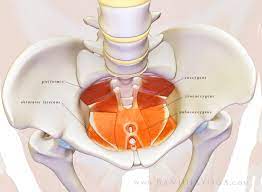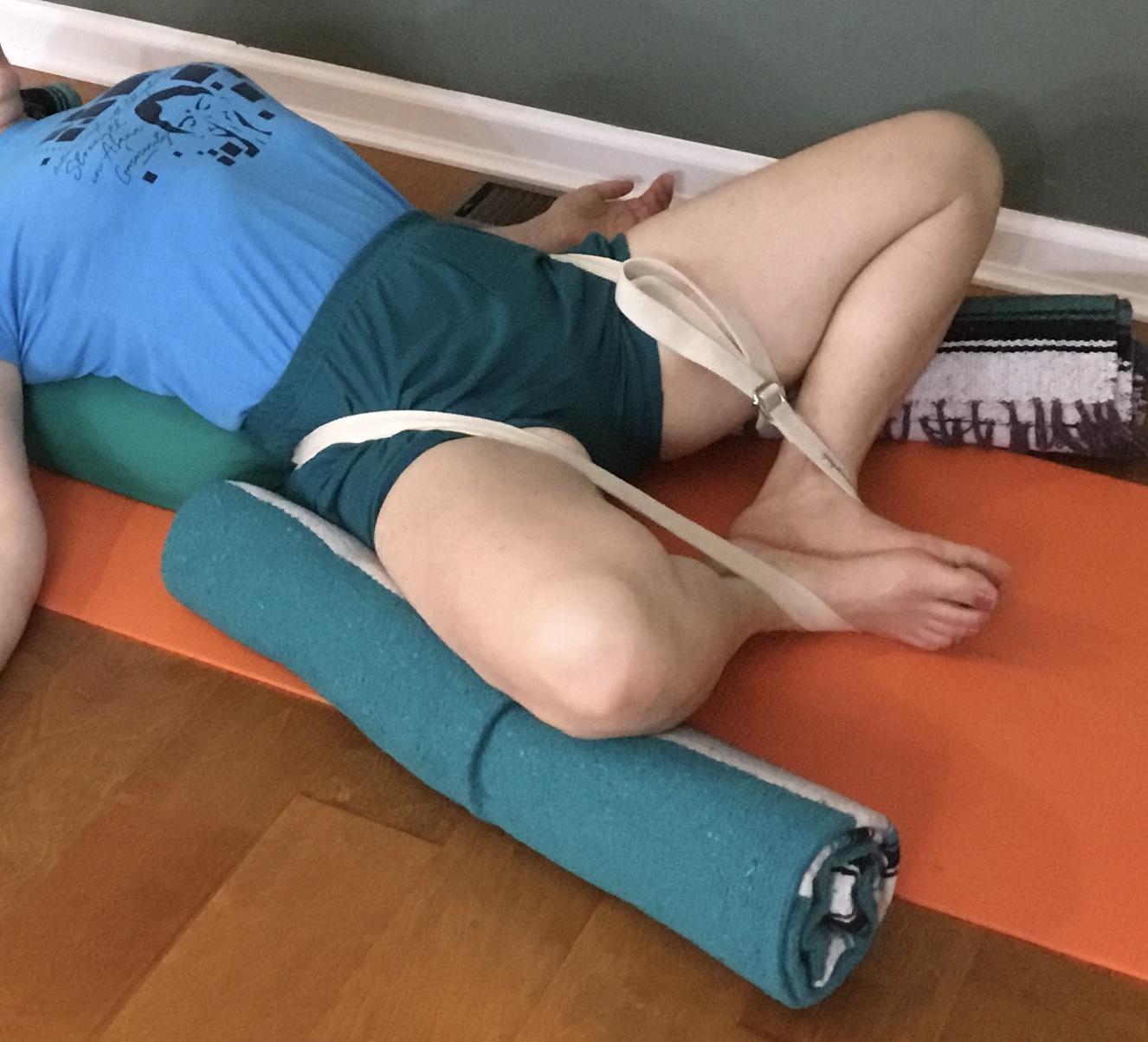
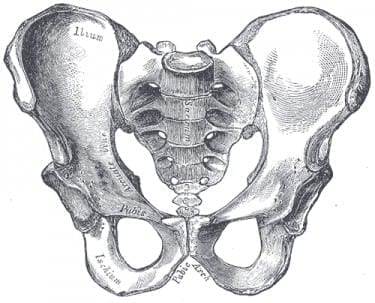
Studies show that up to 47% of women suffer from at least one pelvic floor disorder, including chronic pelvic pain, urinary incontinence, and pelvic organ prolapse. With evidence to suggest that up to one-third of these women will have two or more pelvic floor disorders, one in five will require surgical intervention.
Approximately 13 million Americans are incontinent; 85 percent of those are women. This number is likely underreported. A 2003 study found that incontinence is the second most common reason (after dementia) for admission into assisted living (Mason et al 2003). Pregnancy and childbirth are among the leading risk factors as well as hormonal changes during perimenopause and menopause. The muscles of the pelvic floor provide an support for the reproductive and excretory systems.
The Outer Frame
The word pelvis is derived from the Latin word “basin” in other ancient languages “container, vessel, cup. “ The pelvis holds the weight of the spine as well as the abdominal organs and transmits that load through the hips into the legs. To map out your pelvis, locate its boney rim by placing your hands on your hips. Then slide your hands back tracing that rim, and in the back, you’ll find the sacrum which forms the base of your spine at the bottom of which is the tailbone. This boney circumference of the top of the pelvis is made up of two large scoop-like bones known as the ilium. The ilium are fused with the pubis (in front) and the ischium (below). When you’re sitting on a hard surface and feel your sitting bones, that’s the ischium or more precisely the ischial tuberosities.
What are the muscles of the pelvic floor anyhow?
The underside of the pelvis is supported by interwoven layers of muscles and connective tissue known as the pelvic floor. It includes three layers that have five main functions: 1. Stabilize the sacroiliac joint (the connection between the sacrum and the ilium) 2. Support organs 3. Sexual intimacy 4. Allow for excretion of waste. 5. Serve as a junction for venous return from legs. Unlike more superficial muscles such as your biceps that you can see or easily feel, the muscles of the pelvic floor are unseen and therefore less known. These deep muscles provide an inner framework that support your back and organs as well as promote healthy functioning of reproductive and excretory organs. The deepest layer, known as the pelvic
Are my pelvic floor muscles too Tight? Too Lax? Both??!!
Pelvic floor muscles can be overly tight, too lax or even both. Imbalances in the pelvic floor can lead to incontinence, pelvic organ prolapse and may also manifest as hip pain, sacroiliac pain, back issues, pain during intercourse, frequent urge to urinate, or constipation. Iyengar Yoga works first to align the pelvic girdle to provide optimal support and then to tone these deep network of muscles – meaning that muscles can relax when needed as well as engage efficiently.
Key Principles
Two main principles that are important for health of pelvic floor are good postural alignment, and awareness of breath. The best way to begin to connect with these deep hidden muscles and is through the breath. As you inhale your respiratory diaphragm moves down and the pelvic floor descends, as you exhale, the respiratory diaphragm moves up and the pelvic floor ascends. This video, (with English subtitles) shows clearly the relationship of these diaphragms.
Try out these short practices below.
Connect with your Breath
This pose gently opens pelvic cavity and allows abdomen to spread and release. Place your hands on your abdomen and as you inhale feel your abdomen gently rising up into your fingertips. Exhaling let your abdomen release. The respiratory diaphragm and the pelvic floor move in tandem. When you inhale they descend, and exhale they ascend. Visualize the diaphragm, which is a dome shaped muscles attached to the ribs – moves down when you inhale, the pelvic floor relaxing. When you exhale allow everything to just return to its shape.
Don’t be discouraged if this is challenging, it takes time to create a new pattern of breath. Instead focus on relaxing and breathing. You will find a new rhythm. Continue for 3-5 minutes.
After coming out, stand up and observe the feeling in your pelvis, abdomen and diaphragm. Is there more space? Freedom? Deep relaxation?
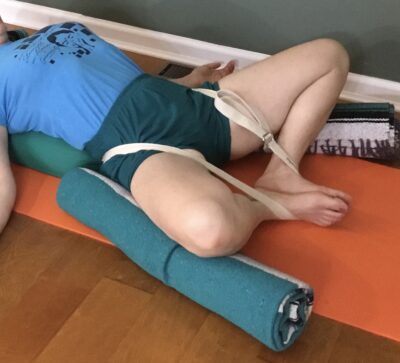
Supta Baddha Konasana (Reclined Bound Angle)
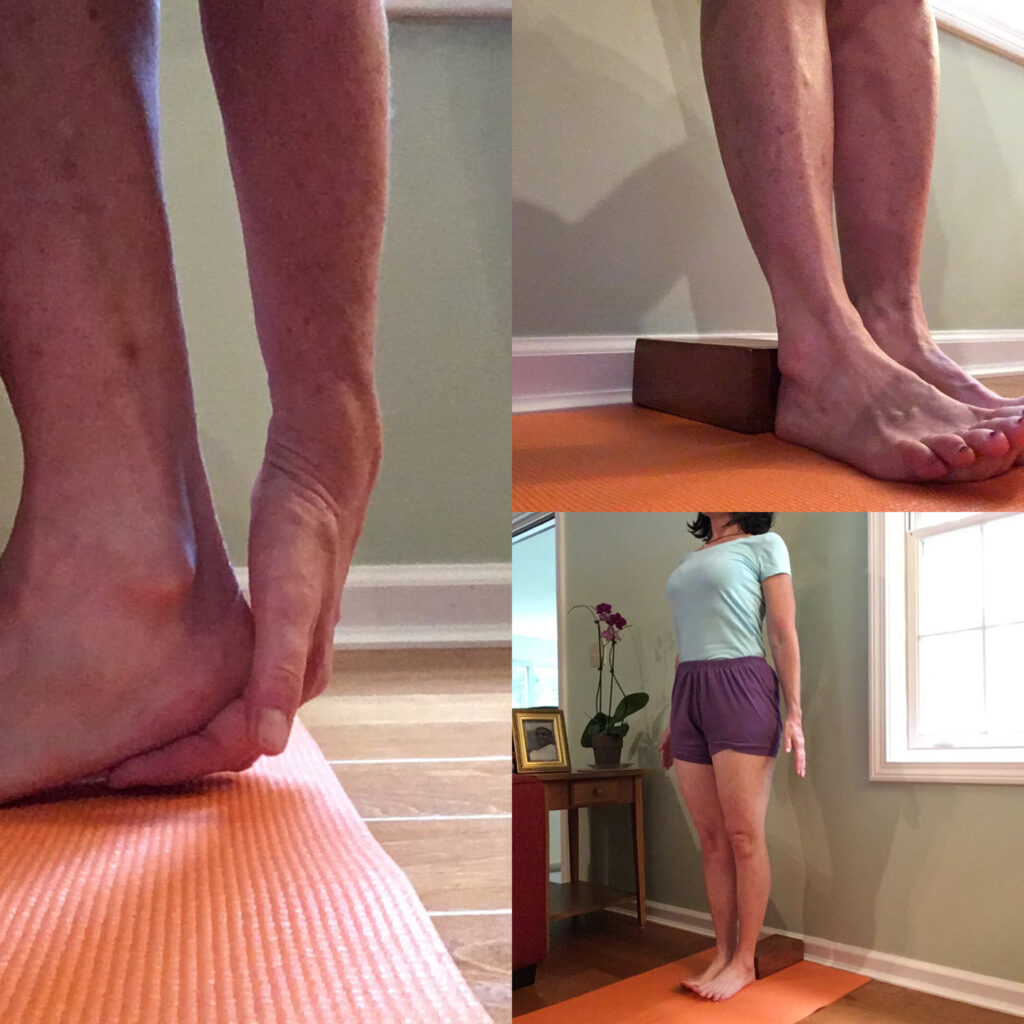
Tadasana (Moutain Pose Variation)
Align your Pelvis
Lengthen and open bottom soles of your feet. Stand with back of heel in contact with blocks at wall. Shift the weight into your heels by moving the tops of the thighs back and descending the buttocks into your heels. Combine these two actions. Observe the position of the pelvis – the more you bring the weight into your heels, the pelvis “stands” in an upright position. Observe how the abdomen and its contents, lifts and spreads back towards the spine. When you step away from the wall, bring this awareness throughout your life on and off the mat.
Practice these two or three times/week. As you begin to develop awareness of your pelvic floor, you begin to understand the feeling when your pelvis is balanced and how to both engage and relax these important muscles. Observe how this in turn brings about a feeling of inner stability. If you’re interested in joining me for a workshop on Yoga for the Pelvic Floor, I offer this 2-3 times/year. Feel free to email me with any questions or comments.
